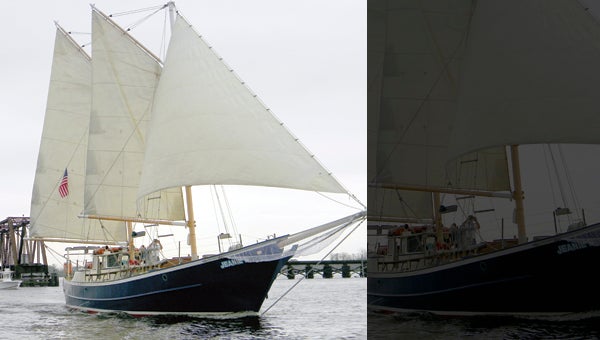Why we are Tar Heels
Published 7:49 pm Thursday, October 23, 2014

FILE PHOTO | DAILY NEWS
PORT TOWN: The schooner Jeanie B. sails into Washington. The boat is docked on the waterfront for most of the year, and offers tours downriver and to Bath. Once, Washington’s waterfront teamed with water traffic and was instrumental to North Carolina commerce.
Although they have lived in coastal North Carolina all or most of their lives, many of the region’s residents have little understanding of the region’s maritime history.
Yes, most folks know about Blackbeard. Many people know about the Graveyard of the Atlantic off the Outer Banks.
How many people know about the role the Pamlico-Tar River played in the development of eastern North Carolina? Not many, more than likely. It’s a good bet folks who grew up and remained in the coastal regions don’t know just how important shipbuilding and the production of naval stores was to the region.
The North Carolina Maritime History Council is in Beaufort County this weekend for its annual conference, which is chock full of activities, events, seminars and presentations concerning almost all things maritime in North Carolina. The council does a great job in preserving the state’s maritime history and culture with its educational and preservation efforts.
Blount Rumley, a council member of director of the North Carolina Estuarium, believes the council has found the right approach to presenting the state’s maritime heritage.
“Every year we have a conference, and it’s generally in the fall some time somewhere on the coast. In recent years, we’ve had it at … Jacksonville, Southport, Wilmington, Hatteras, Plymouth. … It’s a little bit academic, but it’s a whole lot of fun, too,” he said earlier this week. “We try to mix fun and serious maritime history. We want it to be interesting.”
The council’s website explains its mission.
“The North Carolina Maritime History Council brings together all the elements that comprise our nautical heritage. It is a rich heritage, one that tells tales of high drama and unfortunate tragedy,” it reads.
“Often one finds the state’s economic and social development to be synonymous with its relation to the creeks, rivers and sea. The production of tar, pitch and turpentine, for instance, kept fleets afloat while providing a livelihood for innumerable North Carolinians for almost 200 years. It is, in fact, why we are called Tar Heels,” the website notes.
Mission accomplished.




